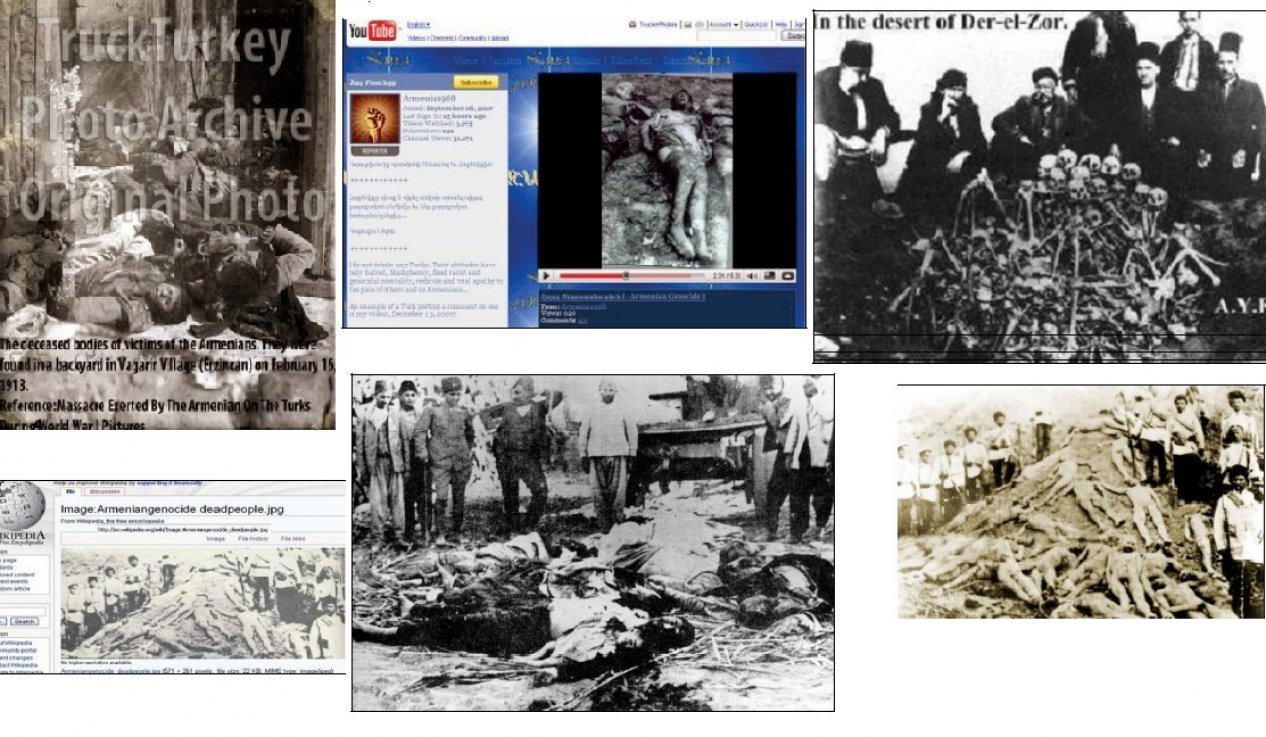
Azerbaijan marked Baku’s Liberation Day on September 15. Some 103 years ago, the forces of the Islamic Army of Caucasus and the National Army of Azerbaijan liberated Baku from the Dashnak-Bolshevik invaders. Much has been written about this, there are enough materials in the public domain that exclude any unclear points in the history of those events. Nevertheless, Armenian media and social networks are trying to interpret them as “Armenian genocide.”
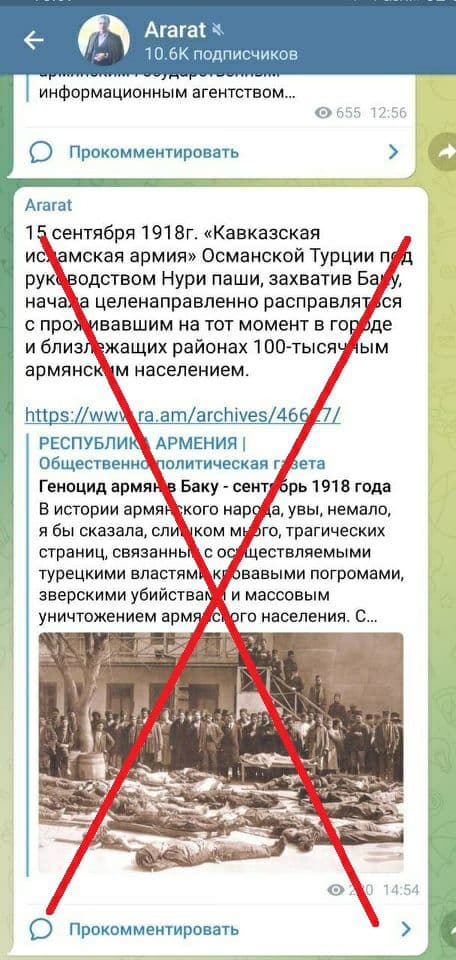
In particular, presenting the liberation of Baku as an “Armenian genocide,” the “Republic of Armenia” publication illustrates its materials with the widely known footage of the events of March 1918, when the Dashnaks carried out genocide against the Muslim population in Baku.
The case is this photo, which is stored in the State National Archives Administration of Azerbaijan under the number L-17552.
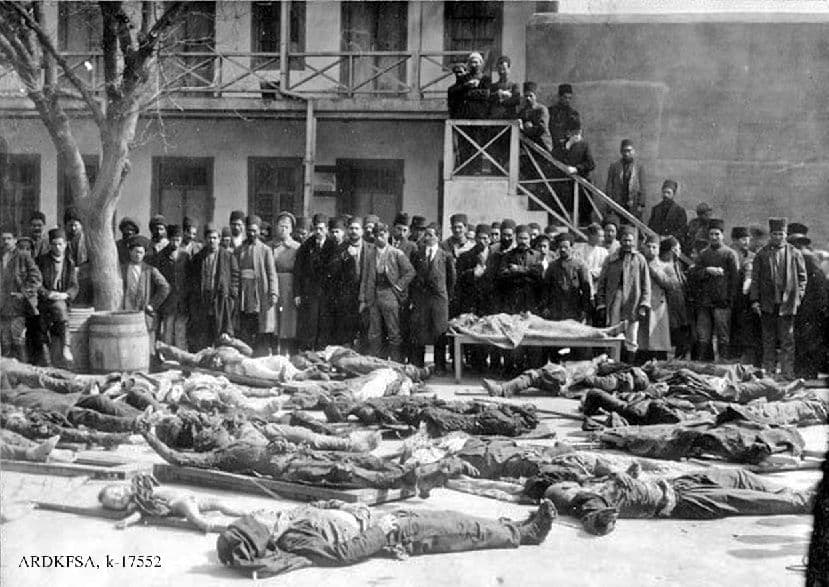
Faktyoxla Lab. has tried to figure out whether it is worth trusting the publications of the Armenian side.
In 2011, Tert.am published an article entitled “Today marks the 21st anniversary of the Armenian genocide in Baku.” The article with no facts was supported by photos serving as evidence. The photos, as it turned out, had nothing to do with the described events, Sumgait, Baku, and some - to Azerbaijan in general.
An investigation carried out by Azerbaijani reporters showed that on one photo, Khojaly children killed by Armenian vandals in February 1992 are presented as “Armenian victims in Baku.” These are sisters Aysel and Gulmira Mehdiyevas, who were shot in front of their mother Nana Mehdiyeva. (Photo of the forensic medical examination: original on the website of Azerbaijan’s State Commission for Prisoners of War, Hostages and Missing Persons)

Another photo features not even Azerbaijan, but Istanbul. It was taken from a Greek news website and reflects the situation in the Turkish capital after the September 1955 riots.

In other photos, victims of the war in Yugoslavia in the early 90s and even an Azerbaijani soldier hanged by the Armenians in the first Karabakh war are presented as victims of “Armenian pogroms.”
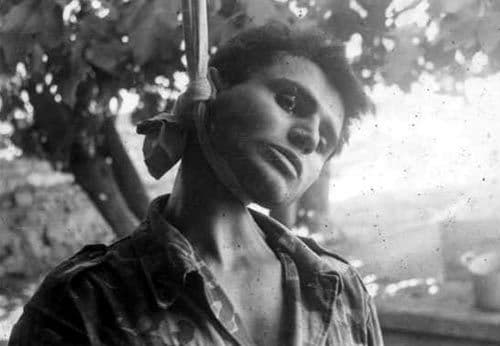
Two years ago, the Armenian Embassy in Georgia and the Ayartun cultural, educational and youth center at the Armenian Apostolic Church in Tbilisi organized a commemoration ceremony to mark the 31st anniversary of the “pogroms in Sumgait.” The announcement posted on the pages of both the embassy and the center on Facebook featured photos of two Azerbaijani children who were brutally murdered by Armenians in Khojaly on the night of February 25-26, 1992. This is the photo of the same sisters Mehdiyevas. The photo was taken from two angles by foreign photographers in Aghdam district and is well known all over the world as a photographic material depicting the Khojaly genocide.
Armenian falsifiers also use more recent facts. In October 2020, during one of the rallies in Yerevan against Azerbaijan’s liberation of its territories, protesters chanted slogans against the alleged use of violence by the Azerbaijani armed forces against civilians. In addition to other posters, the protesters also held a photo of 2-year-old Zahra Guliyeva, a resident of the Alkhanli village of Fuzuli district, who was killed on July 4, 2017 during a mortar shelling of the village. Judging by the photo, the deceased child was presented as an “Armenian victim of Azerbaijani aggression.”
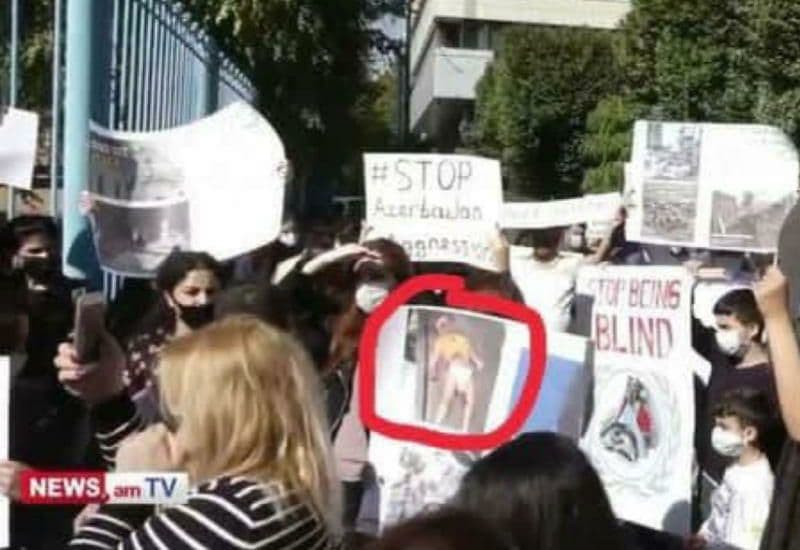
The original photo looks like this:

Of course, the most extensive array of falsifications concerns the so-called Armenian genocide of 1915. Due to the unverifiability of the events in the Ottoman Empire declared by the Armenian side as “genocide,” various photos are widely used for the purpose of falsification. In this regard, let’s turn to the book “Long-suffering Armenia: Myths and Reality” by Georgian historian Guram Markhulia and Azerbaijani political scientist Shabnam Nuriyeva, published in Baku in 2011. The work contains many interesting facts that expose the “genocide” and methods of Armenian propaganda. Let’s take, for example, a photo posted on the website of the Armenian Genocide Museum and Institute.

It turned out that the photo was provided by the Armenian side in a cropped version. Its original version looks like this:
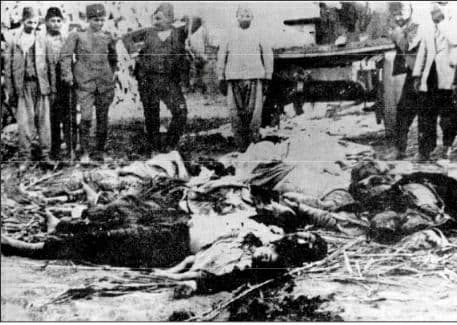
As Markhulia and Nuriyeva write, it turned out that the photo didn’t show Turkish soldiers standing near the corpses of killed Armenians, but Armenian soldiers of the tsarist army, along with members of bandit formations, who perpetrated massacres of civilians in Eastern Anatolia. An Armenian in the uniform of an officer of the Russian army on the photo made this lie become obvious.
Let’s take another example. On the www.genocide.ru website this photo is reproduced under the title “Armenian women brutally murdered by Turkish executioners.”
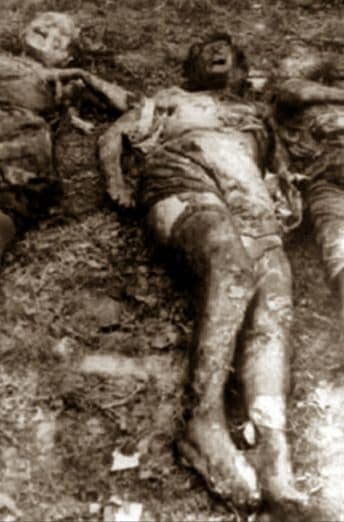
The original is not in Armenia, but in the Holocaust Museum in Israel. The photo, taken by representatives of the International Committee of the Red Cross (ICRC), actually depicts Jewish women killed by the Nazis during World War II in Hungary. At the same time, it would be appropriate to add that in those years the Hungarian fascists were led by Hitler’s henchman and murderer Ferenc Szalasi, who is also an ethnic Armenian by the name of Salosyan, a friend and favorite of Hitler, the leader of the Arrow Cross nationalist party.
Original photo:

Another curious fact of falsification. The website of the museum of the so-called “genocide” features photos made from a mix of video footage of a film shot in 1982 by the Armenian director Muradyan. This was proved by the studies carried out by the authors of ‘Long-suffering Armenia.’ These are some of the delicate moments of the filming process, namely staged photos with the participation of actors and extras. The foreshortenings, details and scenery of the film were well thought out and skillfully presented. But it is interesting that many yellowed shots that were made look like old ones in studio laboratories, later turned into “historical photos,” allegedly confirming the “inhuman suffering” of the Armenian people. The photo presented here features director S. Muradyan himself, who, wearing a modern leather jacket and jeans, turned out to be a participant of the historical event that occurred “a hundred years ago.”

It is simply impossible to list all the facts given in the book by Markhulia and Nuriyeva - there are too many of them. Anyone interested can follow the link and get acquainted with the work on the Internet. Summing up, let’s note that all of the above testifies to the addiction of the Armenian side to falsification and manipulation of facts and photographic documents. Thus, the materials published by the Armenian media in connection with the September 1918 events in Baku cannot be perceived as reliable.




















